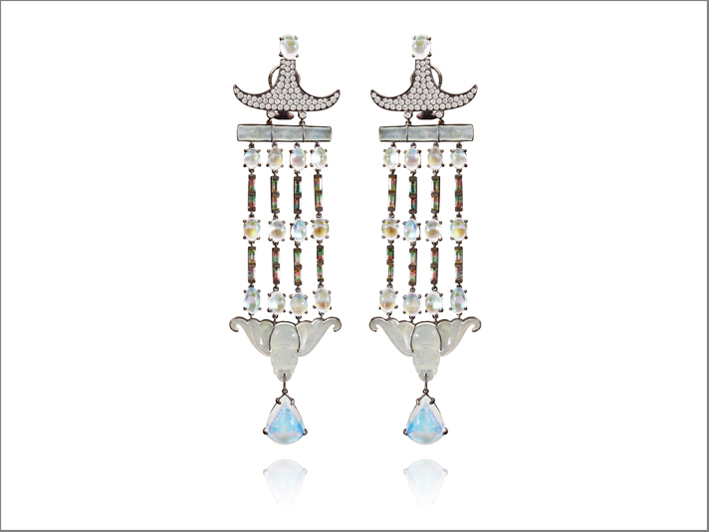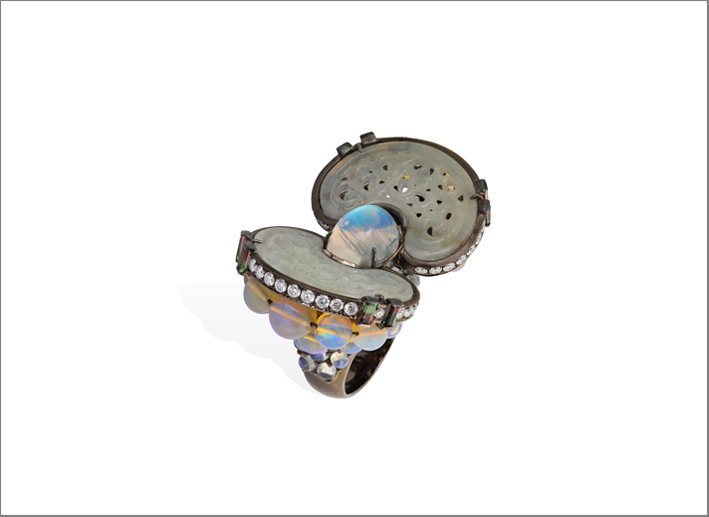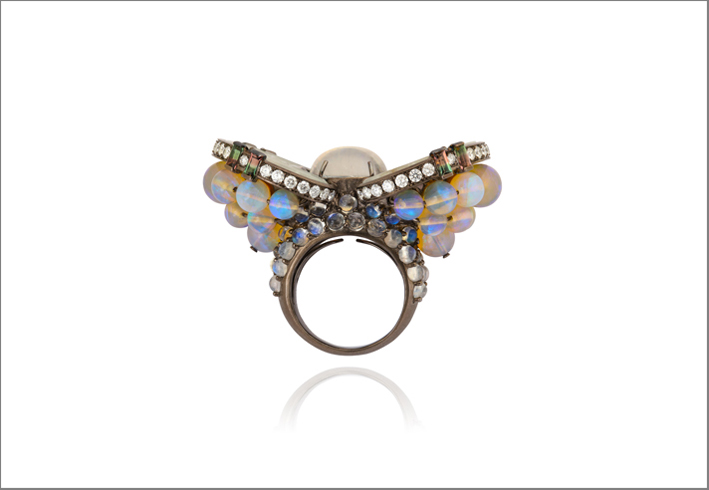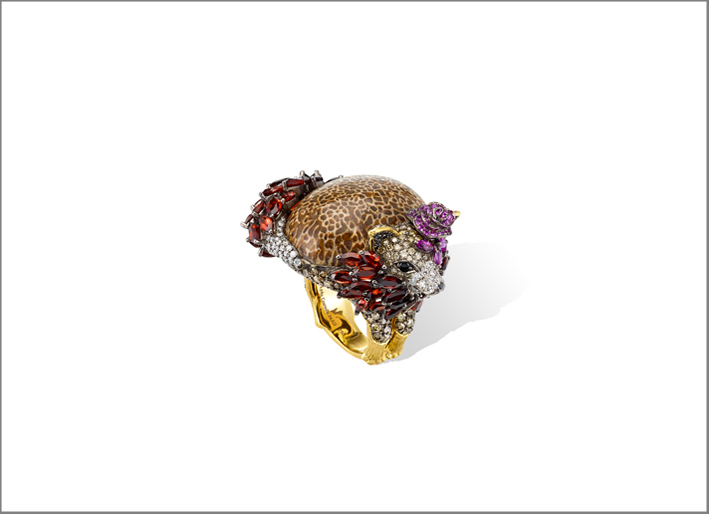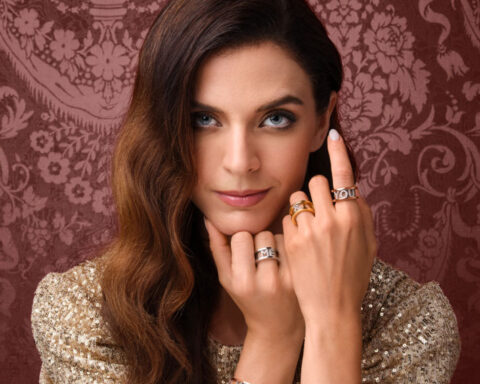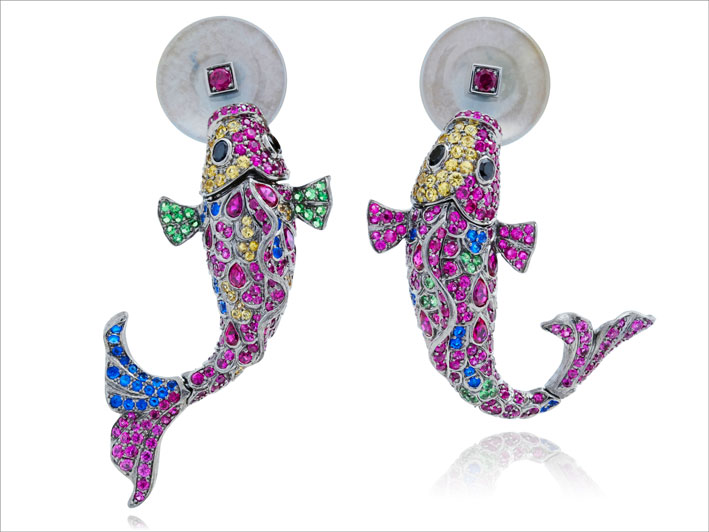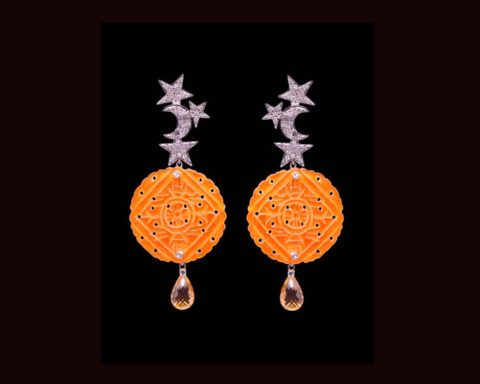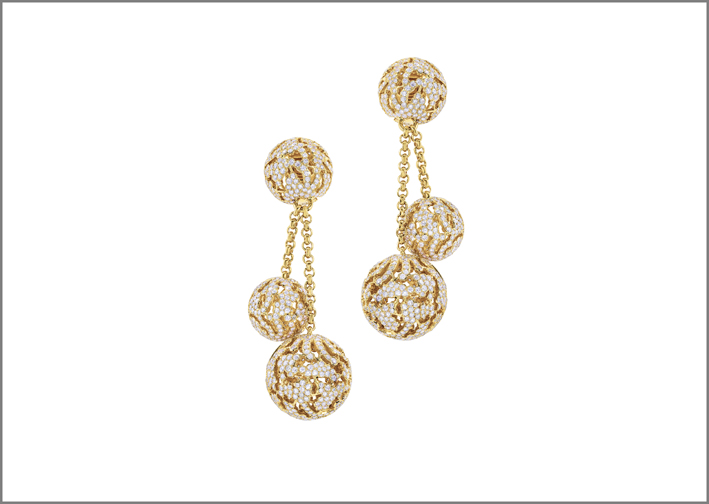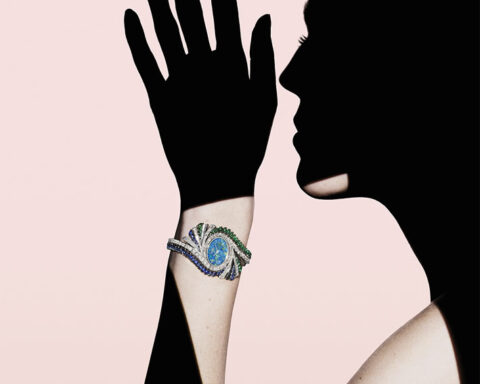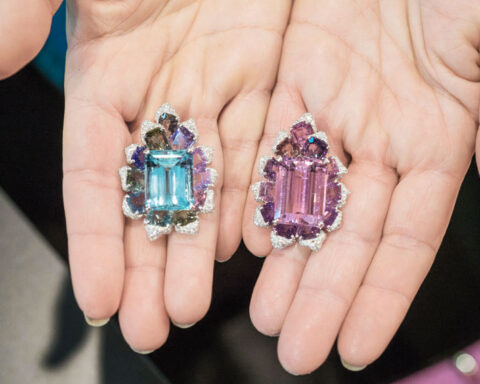If Lydia Courteille did not exist, it would have to be invented. Which other jewelery artist goes on a journey every year and translates what she has seen and learned into a collection that is made up of small, imaginative and precious sculptures? After countries like Guatemala, Mexico or the Sahara, this time Lydia Courteille went to China. Indeed, you have embarked on a journey through the time of the great Asian country, in its culture, history, traditions. The result is the Fragrant Concubine high jewelery collection. The beauty is that the Parisian artist-jeweler accompanies her work with a guide who traces the creative path in parallel with the historical-anthropological one.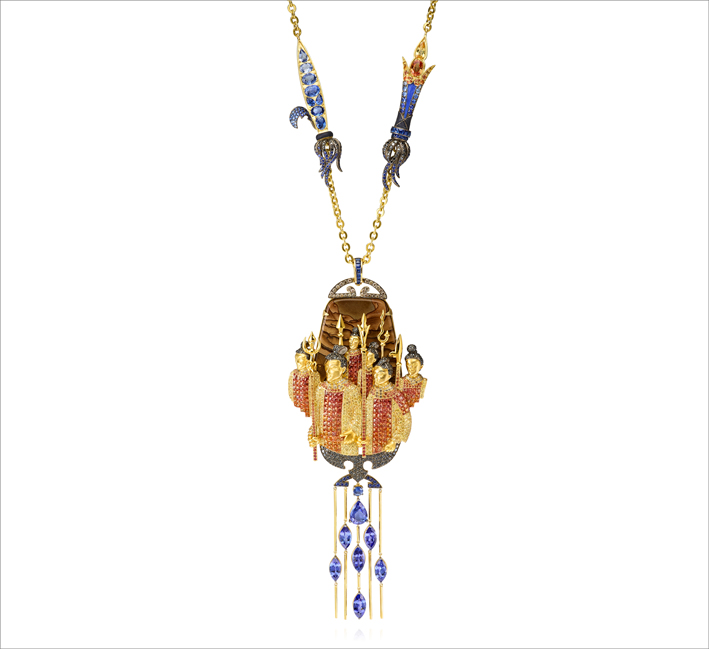
This time the starting point is the Silk Road and the contribution of Chinese history to art and architecture, to religious and philosophical reflection. In the 2nd century BC, Emperor Han sent his envoy, Zhang Qian, to forge alliances with other tribes to establish secure trade routes. The camel caravans departed from Chang’an, the capital and ended in the Parthian Empire (today’s Persia) and from there the silk was transported to the Persian Gulf and the Mediterranean Sea, up to Rome. China, on the other hand, imported glass, jewelry, cotton.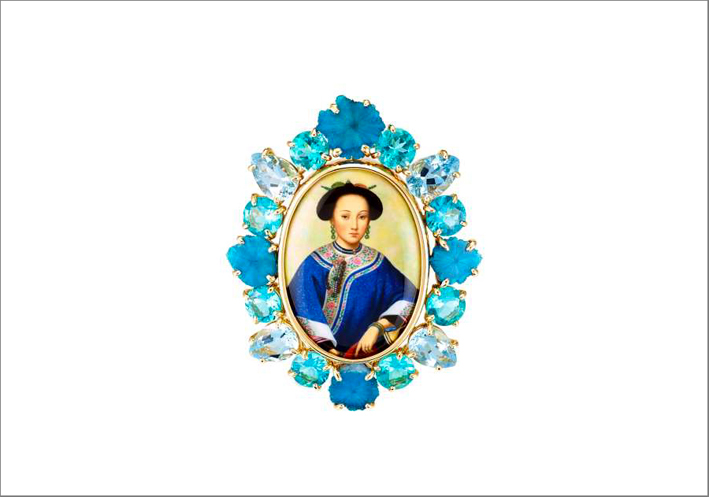
Chinese legend tells that the Qianlong emperor (1735-1796) of the Qing dynasty took as his consort a Muslim Uyghur girl named Iparhan (which means musky woman and is a compliment). Even more remarkable than her beauty was the scent her body naturally produced. Fascinated by her, the emperor sought her as an imperial consort for her harem of hers. She was given as a gift to the emperor and carefully escorted to the imperial palace in Beijing, bathing every day along the way in camel milk to preserve its mysterious scent. Upon arrival at the imperial palace, the fragrant concubine received a garden and a luxurious room as a token of Emperor Qianlong’s devotion.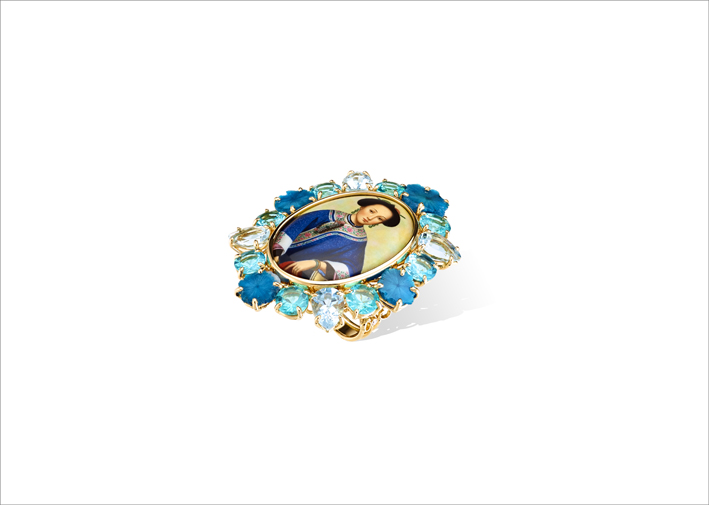
Homesick and distraught, she remained dejected as the emperor made ever greater efforts to recreate her village far from her, building her a mosque, a miniature oasis and a bazaar outside her windows in an attempt to bring her happiness. . She eventually gave in and fell in love with him when she sent messengers to Kashgar to return with a jujube tree bearing golden fruit and the Fragrant Concubine became the emperor’s consort. A symbol of national unity and reconciliation, her body was brought back to her home in Kashgar, where she is now buried, in a procession of 120 bearers on a journey that lasted more than three years. A story that, Lydia Courteille notes, is still relevant in the desert borderlands of China, where a feeling of independence is still alive among the Uyghurs.
Jade is one of the materials chosen by the designer for this collection. This stone for the Chinese symbolizes the intimate alliance between aesthetics and religion and tradition attributes spiritual and moral virtues to the gem. Since prehistoric times, jade has been a natural mineral substance that has earned gem status. In China, jade cutting is a tradition that dates back about 6000 years. It is also a difficult material to work with because, unlike other stones, it does not crack. To give it a smooth and round appearance, the craftsman has to spend long hours polishing it with an abrasive. Highly regarded by Chinese scholars and aristocrats, jade was not just a precious object: some of these stones were traditionally applied to the body to protect itself from harmful influences. In the earrings of the Lydia Courteille collection she associated the crane, a bird, with beans, symbols of prosperity, rebirth, happiness and fertility.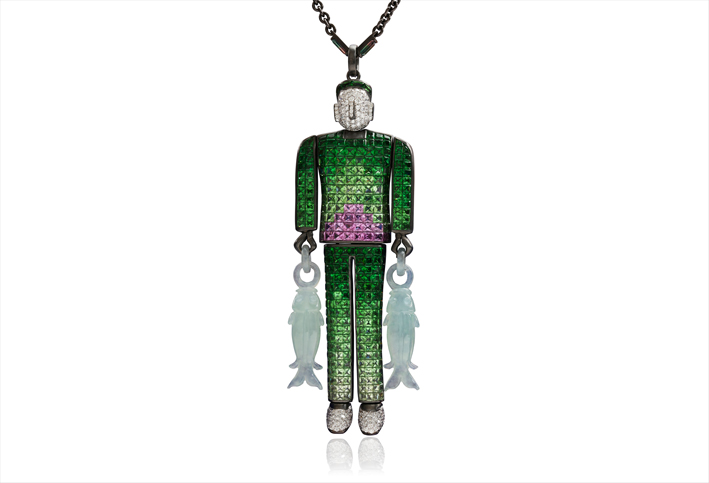
Royal members of the Han dynasty were buried in jade shrouds, intended to preserve the dead in the afterlife. Jade, due to its magical properties, was supposed to protect the body of the deceased: an honor reserved for members of the royal family (and not everyone). Starting from this tradition, the Parisian designer has created a pendant in jade, tourmaline, tsavorites, pink sapphires and diamonds.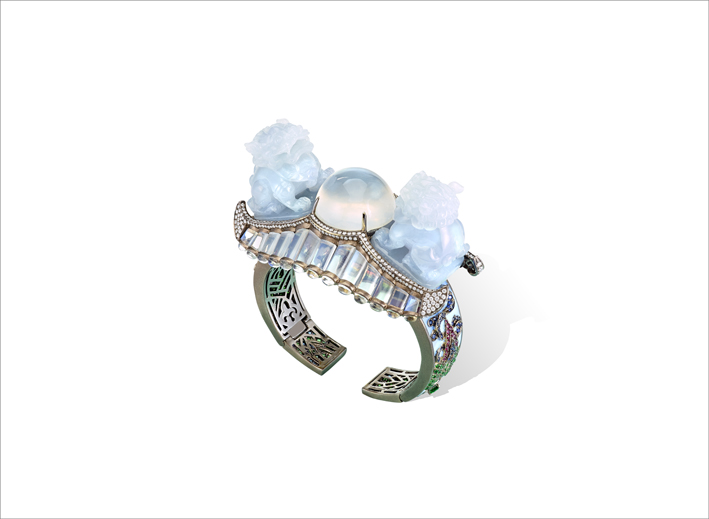
Another piece of the collection is inspired by the 500 Mogao caves, which contain the richest collection in the world of Buddhist paintings, manuscripts and statues. The caves contain more than 45,000 murals and 2,000 colored stucco sculptures. Most are connected to each other by balconies, walkways and corridors. With the rise of trade during the Han dynasty and cultural exchanges via the Silk Road, lions were introduced to China from the ancient states of Central Asia by the peoples of Sogdiana and Samarkand. In Chinese Buddhism, a pair of stylized lions are often depicted, often a male with a ball and a female with a cub, which were thought to protect the building from harmful spiritual influences. A bracelet with two carved jade lions, together with tourmalines, moonstone, tsavorites, sapphires, rubies and diamonds, is linked to this tradition.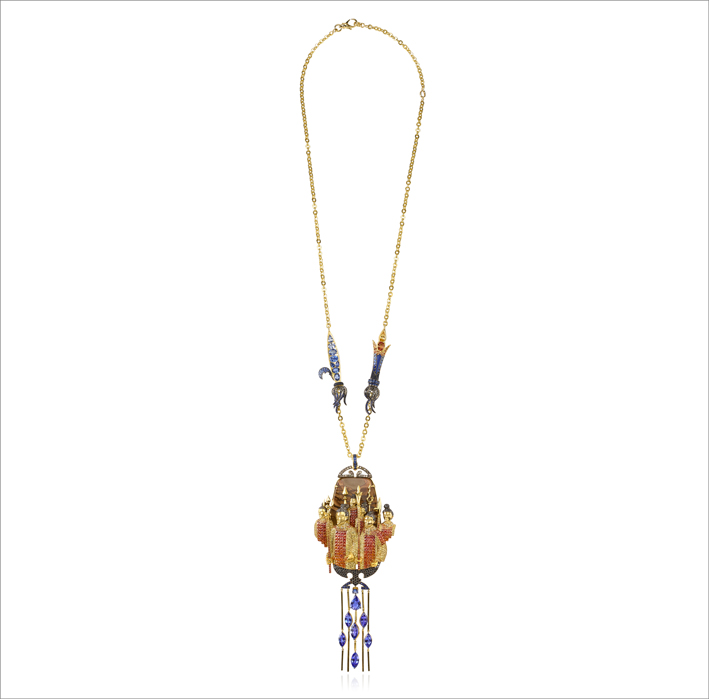
Another jewel is dedicated to the famous terracotta army made up of 7,000 life-size warriors and accompanied by 600 horses, 100 chariots and an impressive amount of bows, arrows, spears and swords, which have remained in perfect condition. These figures, all facing east, had the task of watching over Qin Shi Huangi, who died in 210 BC. In this case, the matching jewel is a pendant in gold, jasper, tanzanite, sapphires, black and brown diamonds.
